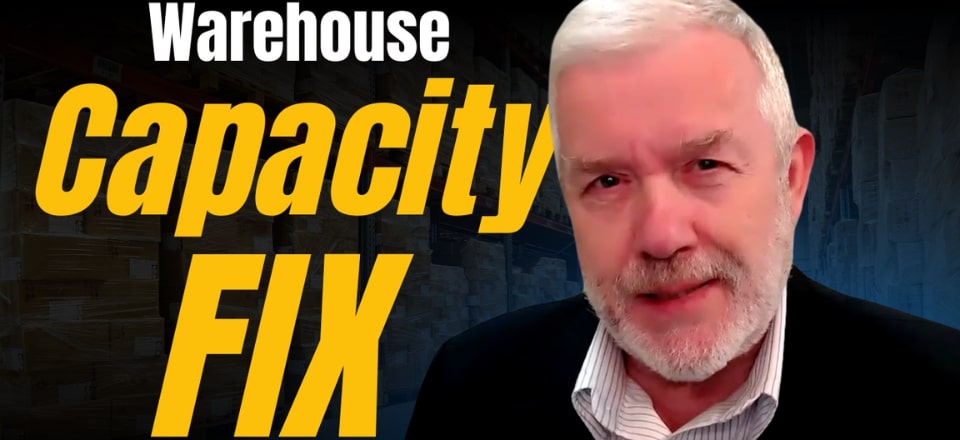Running out of warehouse space can feel like trying to fit a growing puzzle into a shrinking box.
But the solution isn’t always to expand or move. Instead, it’s about seeing your existing space with fresh eyes—thinking creatively to unlock hidden potential.
Watch the video below to learn more.
Maximizing Warehouse Space Without Moving
Warehouse capacity issues are a common challenge for businesses. Many quickly assume they need to move or lease additional space, but there are often smarter, lower-cost strategies to optimize existing warehouses.
Let’s explore a few key solutions.
Make the Most of Capacity
When a warehouse feels “full,” it’s often only full from a location perspective, not cubic capacity. By examining the vertical space between shelves, businesses can find underutilized areas. Adding extra beams or shelving to compress unused space can create additional storage without the need for significant investment. For example, standard pallet racking can be adjusted to fit smaller or half-pallets, increasing overall capacity.
Tackle Inventory Issues
Excess, slow-moving, or obsolete inventory often occupies valuable space. By identifying and removing such items, businesses can free up locations for more active stock. For slow or seldom-picked items, consider “commingling” them in shared locations and storing them in less accessible areas. This approach may deviate from strict “one SKU per location” practices but can significantly improve warehouse efficiency for low-priority items.
Handle Seasonal Surges Creatively
For businesses with seasonal spikes in inventory, building a warehouse to accommodate peak capacity is rarely practical. Instead, consider temporary solutions like off-site storage or using containers for short-term overflow. While there are costs associated with these options, they’re often cheaper than building or leasing extra space that may sit underutilized during off-peak times.
Upgrade Your Storage System
High-density storage systems, like vertical lift machines, carousels, or automated systems like ADAPTO, can dramatically increase space utilization. These systems reduce aisle requirements and maximize cubic capacity. Although they require upfront investment, they also improve productivity through “goods-to-person” operations, where products are brought to workers automatically, saving time and labor.
Adjust Aisle Widths
Simple changes, like narrowing aisle widths and using articulated forklifts, can boost capacity. In one case, reducing aisle widths and adding extra racking levels increased storage space by nearly 30%. These adjustments allow businesses to make better use of existing facilities without moving or expanding.
By reassessing layout, inventory, and storage systems, you can often extend the life of your warehouse. Before assuming a move is inevitable, explore these practical and cost-effective strategies to maximize your current space.
Related articles on this topic have appeared throughout our website, check them out:
- How to Improve Warehouse Layout Efficiency and Save Costs
- The Past, Present, and Future of Technology in the Warehouse
- Common Warehouse KPIs: How to Choose and Use Them
- Spotlight on 7 Key Warehouse Processes
- Warehouse Design – Rules of Thumb… And a Checklist


